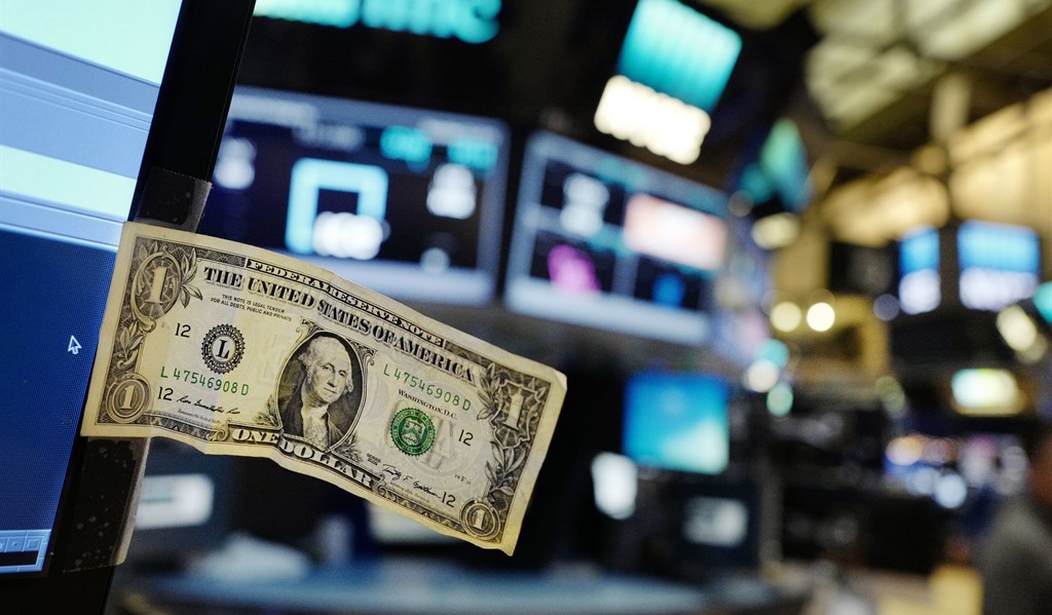Gold rose to $1,298 on Monday morning. Gold is up $30 so far in November, with the London price fix closing above $1,290 for the first time last Thursday, while Americans were celebrating Thanksgiving. On Monday, the U.S. dollar touched a two-month low to the euro, sending gold up $8 on the opening. It now looks like we could close 2017 near $1,300. If so, that would be the best year for gold since 2010. In fact, if gold closes the year above $1,255, that would mark gold’s best percentage increase since 2010.
You would think that with “Brexit” and a weak euro – and tensions in the Middle East and Asia – that the dollar would be the “safe haven” currency of 2017, but the big surprise of the year is that the U.S. Dollar Index began the year at 103 and is currently under 93 – down 10% in the first 11 months of the year.
Two developments helped the euro recover – political unity and a recovering economy. The elections in France and the Netherlands helped support the European Union (EU) rather than repeating the Brexit-style divorce voted by the British in 2016. While the German election is not yet settled, the German economy is humming along with a 3.3% GDP growth rate in the most recent quarter. With the EU back on solid ground and the European economy recovering, the euro has recovered strongly vs. the dollar.
Recommended
Another reason for the dollar’s decline is that President Donald Trump was enjoying a “honeymoon” with investors last January. Even if they disliked his personality, investors believed his plans would support a stronger dollar. However, as we enter the final month of 2017, none of Trump’s major plans have passed Congress, so the sagging U.S. dollar reflects the growing reality that most of Trump’s plans won’t pass.
A weak dollar helps gold, so the 10% decline in the dollar is reflected in the 12.6% gain in gold in 2017. But most of the other commodities have not followed suit. The CRB commodity index is down slightly (-0.15%) for the year so far. Crude oil has recovered to a 9.7% gain, but natural gas is down 24.5% in 2017.
Many Lower Grade U.S. Gold Coins are a Better Buy than Bullion
One reason we talk so much about gold bullion is that prices for many common-date classic U.S. gold coins (minted before 1934) tend to move with the price of gold. This is not true of rare U.S. gold coins, of course, but it is true of circulated gold coins and some common-date uncirculated lower grade gold coins. In a strong bull market, these coins have historically traded at more significant premiums to the price of gold, but now the more commonly-traded gold coins are close to the price of gold bullion itself, so this marks a unique buying opportunity for leveraging the price of gold by owning common-date lower grade uncirculated U.S. gold coins, like MS-62 or MS-63 $20 Liberties, with little “downside risk” outside of the price of gold itself.
Gold mining stocks are also touted as a way to “leverage the price of gold,” but they don’t have the inherent advantage of rare gold coins. While a well-run gold mining stock can leverage the price of gold on the upside, it will also leverage gold to the downside, and many gold mining stocks disappear entirely due to bad management or an uneconomic mine, where it is not profitable to mine gold at a price below $1,200. With rare gold coins you will never see them trading below the price of their “melt value” gold.
Many pre-1934 low grade U.S. gold coins have recently traded at their lowest premium above gold in the last 15 years.Some circulated gold double eagles are trading just above their melt value. At the same time there is great demand for the next tier up in quality which we strongly recommend as an alternative to gold bullion bars and coins. We continue to recommend that investors buy some high grade classic gold coins and rare coins for their superior profit potential.
























Join the conversation as a VIP Member